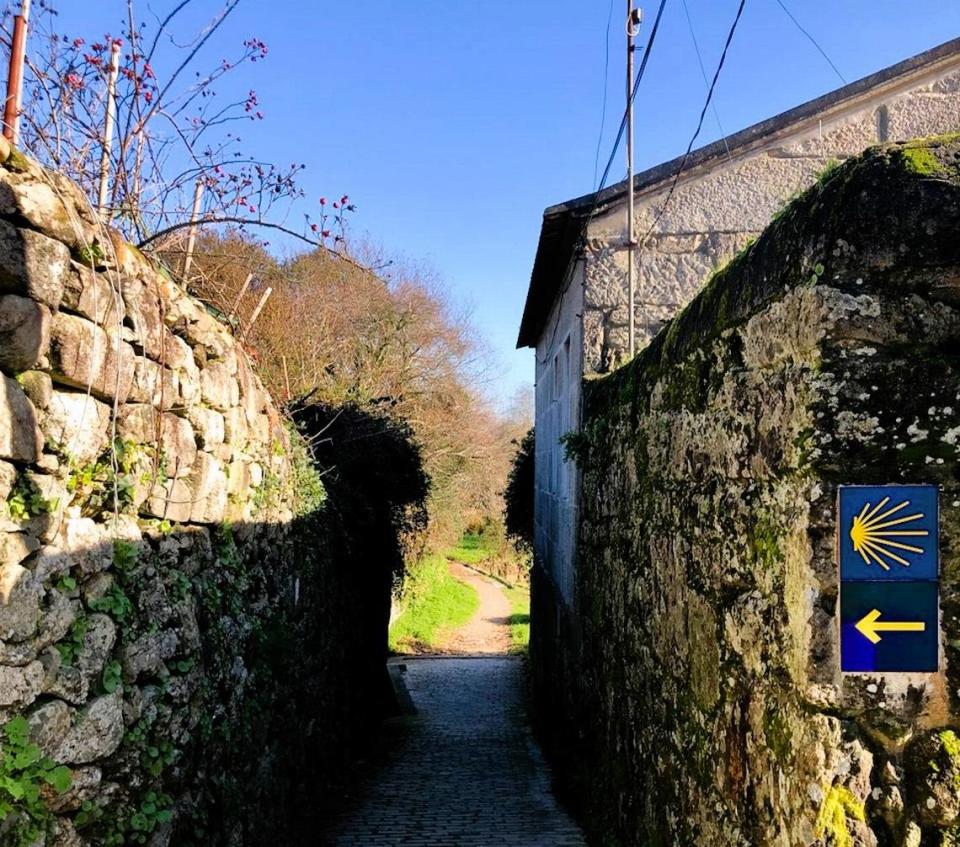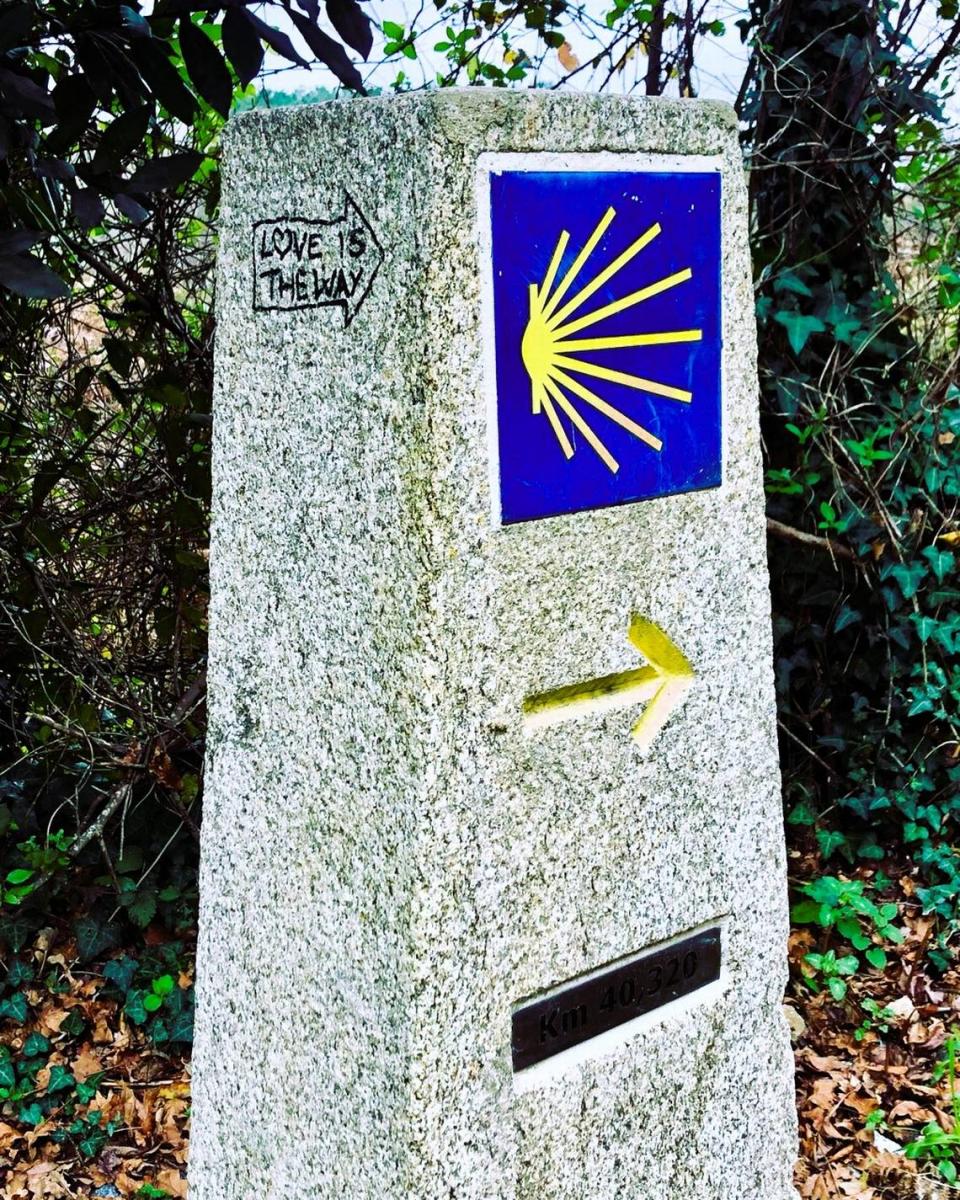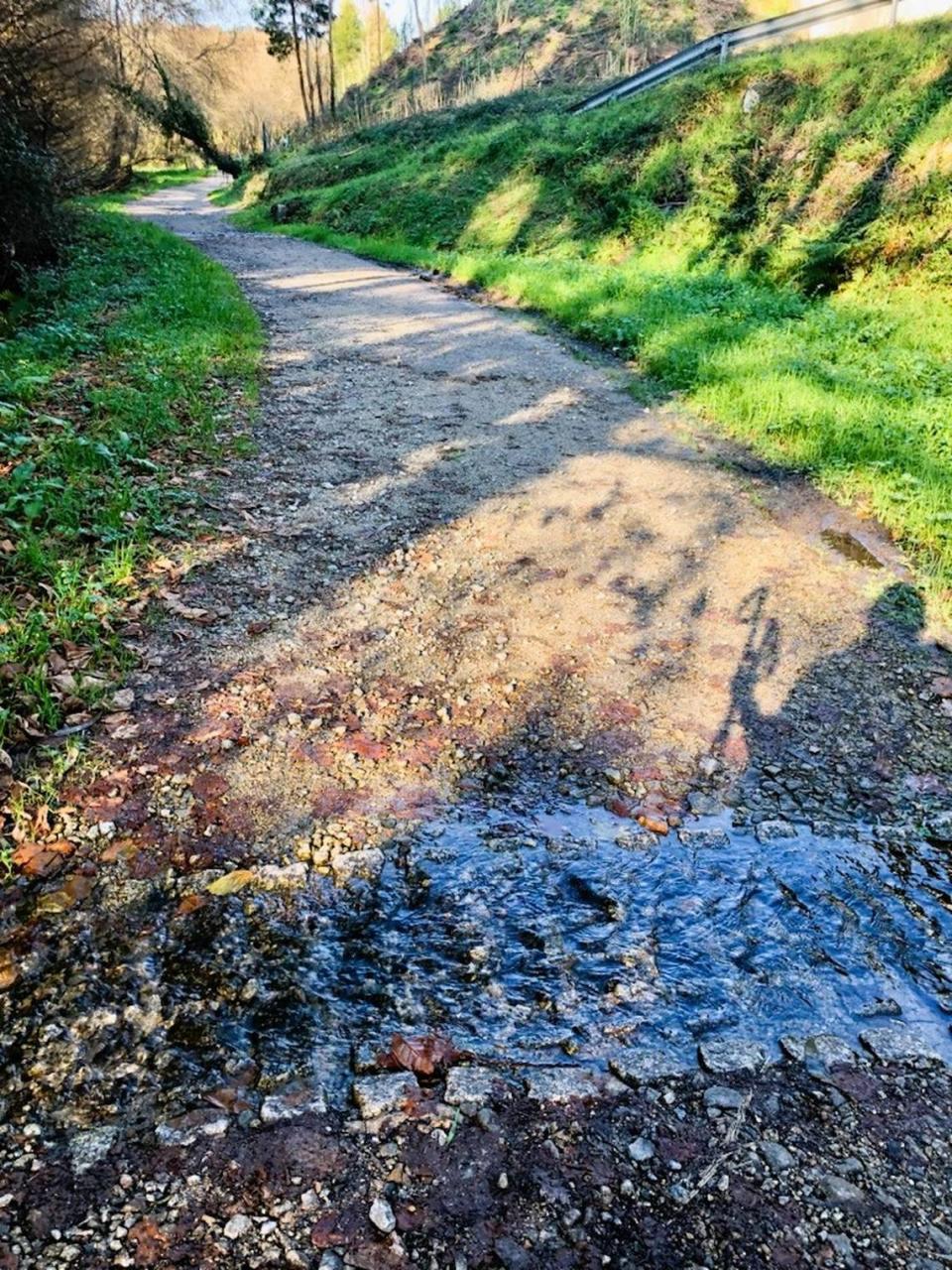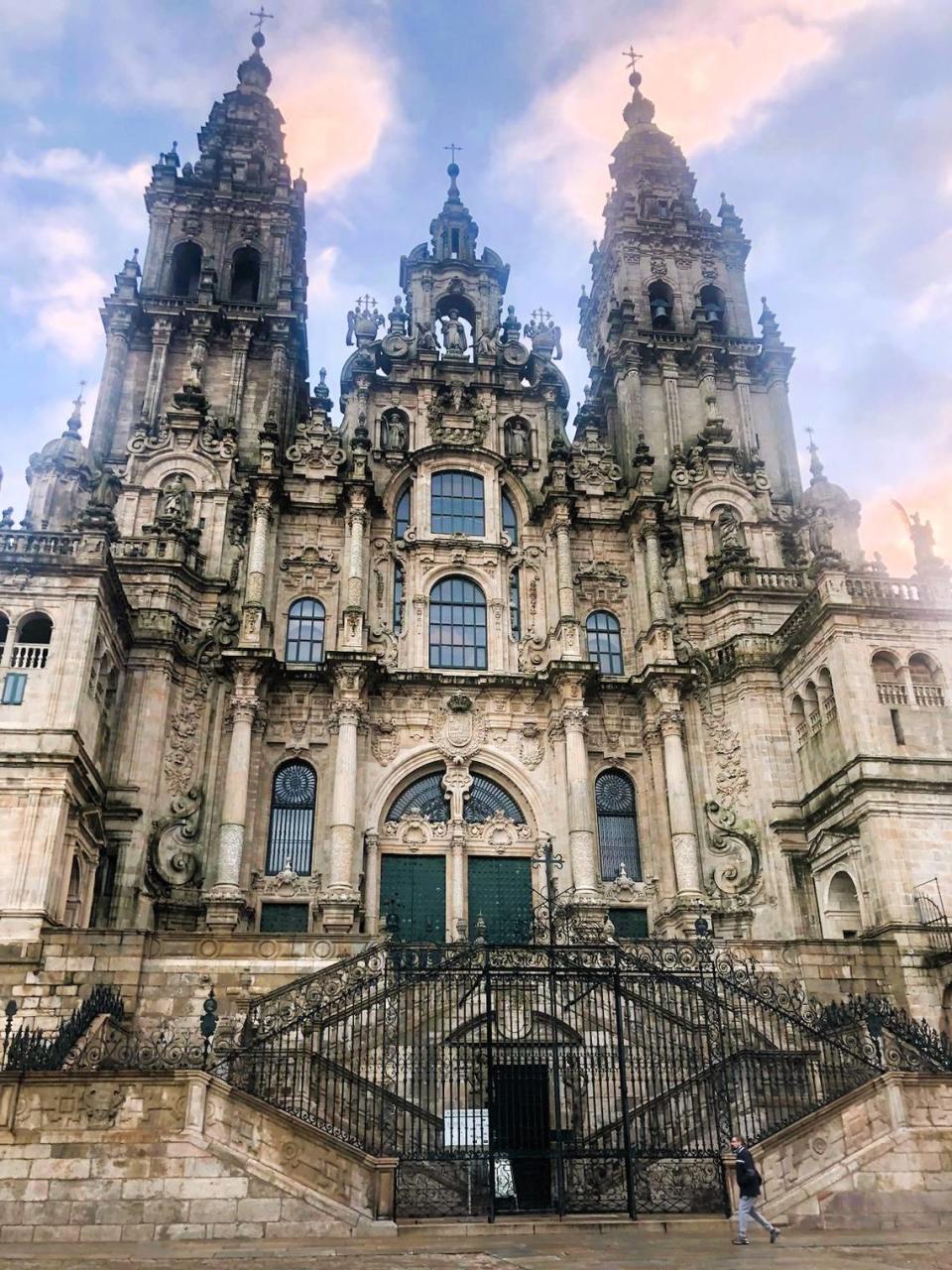In a world short on perspective and high on grievances, an ancient Camino shows the way | Opinion
Why, I ask myself more than once, am I devoutly following bright yellow arrows and shells — walking alone, hiking poles in hand, too-heavy survival pack on my back — into unknown woodlands, farmlands and storybook villages for some 100 miles, from a Portuguese border-town to Santiago de Compostela in northern Spain?
I come up with no clear answer other than the possibility of a mental and physical reset, aided by my addiction to discovery as motivation.
This adventure tests me like no other.
I’m energized by leaving Florida behind, even when strenuous daily walks demand I bandage ankles, feet and knees. It was time to separate, at least temporarily, from a world short on perspective and convulsed by grievances, violence and dueling narratives.
Like millions of pilgrims through the centuries searching for solace and enlightenment, I’m on one of the paths of the legendary Camino de Santiago, engaged by everything along the way: breathtaking nature, friendly people, animals who bark, crow and baa when they see me coming.
People come to the pilgrimage, a record-breaking 446,035 in 2023, with intention and burdens to leave behind. I’m not so sure what mine are. I’m a free woman who, for the first time in her adult life, isn’t taking care of anyone but herself. I’ve brought with me for inspiration a shell from St. Augustine Beach to leave behind at a designated place for offerings and a small wooden heart inscribed with my late mother’s name, Olga. Accompanying me via chat are close family and best friends.
What more could I need?
“The Camino will provide,” the reassuring signature saying goes.
I’m not one to leave things to others, but I learn to let go.
I’m not the religious type, but tears flow during Christmas morning mass at the Pontevedra Basilica, and again, throughout the pilgrims’ mass at the end of my walk at Santiago’s majestic cathedral.
Raised Catholic but long-estranged by the church’s patriarchal entrapment, I’m more often than not horrified by what people have done through the ages, and still do, in the name of religion. But now I find the churches I come upon soothing and sacred.
The yearning to walk the Camino — The Way of Saint James, the original mythical pilgrim and one of Jesus’ 12 apostles — has stirred my soul for years. The road full of mystery is now the moving force of my days.

Origins & Community
It all starts to make sense.
Of all the pilgrim paths to Santiago, I chose The Portuguese Way because a DNA test revealed that my ancestry is both Spanish and Portuguese, the latter a revelation. The only known family-origin fact is that my paternal grandfather immigrated to Cuba from the Canary Islands, a stowaway on a ship when the island was still a Spanish colony.
As homage to ancestors, I begin my 120-kilometer walk, after stays in the cities of Lisbon and Porto and a train trip along the coast, by crossing from the last Portuguese town of Valença via the bridge over the Rio Minho, to the border-town of Tui in Galicia, Spain.
By Day One’s nightfall, I have already experienced community.
Churches are open for holiday hours only, and this being the Camino’s off-season, I’m unable to secure the required two stamps per day on the pilgrim credential I picked up at Lisbon’s cathedral. I will need them to earn the Compostela — the certification of my walk — and I’m advised at the local market to get another stamp from the lottery sales office down the street.
After a good laugh at the mixing of gambling, luck and spirituality, I do as I’m told and score the prettiest of stamps, an illustration of the bridge I crossed. On the way to the Spanish parador where I’m staying for the night, the first of three historic government-owned and run hotels I’ve booked, I pass by La Jamoneta Bar.
It’s packed with older men, the only woman being the sole bartender-waitress. I stand at the door, inquiring in Spanish: “Why aren’t there any women here? Where are the women of this town?”
One answers: “We were waiting for you!” They cheer when I accept the invitation to come in.
I end up watching with these life-long friends — and an adorable 8-year-old boy who asks me lots of questions — a soccer match between Girona and Sevilla (a 1-1 tie). They treat me to too much wine and platefuls of local tapas.
The last bottle opened is a delicate white Rolan Cainho. The man who makes it from a grape variety on the verge of extinction, and whose picture as a young man is on the label, turns out to be one of my hosts.
I can hardly believe it, nor the public marriage proposal that follows, with the promise of the inheritance of a fine winery. We laugh. We toast to the holidays and the new year. These friendly gallegos won’t let me leave, and I don’t want to, anyhow.
It’s the boy who has stolen my heart.
His mother left him, the men tell me, and the neighbors are helping his father raise him. He’s sweet and clever and now I understand the reason he asked me why mothers and fathers don’t get along. I did my best with a subject I once had to explain to my daughters. I tried to soften his load with notes of hope, assuring him that he’s loved, and connecting with him through his devotion to soccer. We talk about Lionel Messi playing in Miami. He knows more about that than I do.
He gives me the tightest hug when he’s whisked away to bed. I really needed it.
This precious moment of community, and many others to come, are reason enough to be here, I think, and I surrender to whatever these next eight days bring.
Perhaps this is the first sign of faith in bloom.

Way-markers
The arrows and shells — way-marks and international symbols of the storied Camino — provide not only guidance but also needed inspiration on the ancient Via Romana, a route traveled by Queen Isabel of Portugal in the 13th century and by the modern-day pilgrims who complete their chosen Camino routes.
According to the Pilgrim’s Office in Santiago, the largest number of foreign pilgrims in 2023 came from the United States.
As in everyday life, however, guideposts aren’t always easy to spot.
I get lost more than I care to confess, adding kilometers to my long trek. I feel no stress about it — until one late afternoon when I’m tired, limbs aching after a 15-mile walk, and I’m nowhere near the town of Redondela, where I need to be for the night.
All attempts to hire an Uber, a bus or a taxi fail. I keep walking.
“¡Buen Camino!” a man remodeling a quaint roadside house waves to me.
He has a kind smile and I share my predicament. Unlike other pilgrims who hire accommodation and luggage handling companies that assist pilgrims when in trouble, I decided I wanted to craft this Camino myself and let the days dictate the way. I shipped my carry-on luggage from Tui to Santiago via Correos, the Spanish postal service, and book stays as I go.
The night before, I had scored a room with a bathroom for 20 euros in a lovely pensión in tiny Mosende after a seemingly endless walk, made better by the company of a 23-year-old woman from the Netherlands. Her European GPS skills and my Spanish got us what we needed.
But the next day, I make a rookie pilgrim mistake: I fall in love with sweet O Porriño, dilly-dallying for far too long, among other endeavors, accompanying to a faraway church an older woman who told me she had just been released from the hospital after a fainting spell and wanted to attend mass.
I know this sounds strange to weary American ears, but welcome to this otherworldly Camino, where helping strangers is quite normal.
And now I need help myself.

El Camino’s gift
As a journalist, I’m accustomed to routinely assessing people’s credibility. This attentive and respectful handyman isn’t any different. I ask if I can pay him to drive me closer to Redondela. He wavers and I politely start to say goodbye. But he quickly changes his mind: “You don’t have to pay me,” he says. “I’ll take you. I can’t leave you stranded.”
I text my daughter back in the United States and set her up to track me, and tell the man as much. “Qué bueno,” he says. “I’m sure she’s worried about you.” On the way, he tells me about his family and how his four children are looking forward to a fancy Nochebuena meal.
When we reach the historic city center where I had rented an attic apartment, and he helps me with my backpack, I put in his hand a 50 euro bill. He doesn’t want to keep it. But I knew I was making those children’s Navidad a lot better.
I wave goodbye and see the twinkle of tears in his eyes.

Not a day of the Camino goes by when I don’t experience similar acts of kindness in words and deeds. And, in the few instances where people and places fall short, forgiveness comes easy.
Whatever made me embark on this journey, I want to hang on to forever.
Every stage of the Camino is like opening a present.
Every step, especially the last ones taken in unrelenting rain and wind, bring me peace, and an overwhelming feeling that I have felt the presence of grace.

